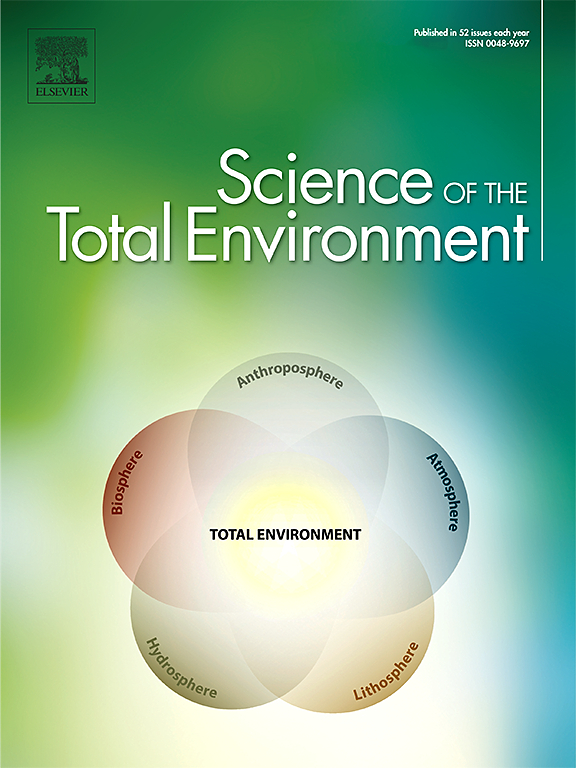Bismuth accumulation and toxicity in freshwater biota: A study on the bioindicator species Lemna minor and Echinogammarus veneris
IF 8.2
1区 环境科学与生态学
Q1 ENVIRONMENTAL SCIENCES
引用次数: 0
Abstract
The heavy metal bismuth (Bi) is attracting increasing interest for its wide range of applications, from industrial processes to medicine. Given the foreseeable increase in its use, the occurrence of Bi in the environment is expected to increase. There is a lack of information on the impact of this metal on biota, especially for the aquatic ecosystem. In this regard, an experimental study was performed under controlled conditions to assess the effects of Bi on two bioindicator species of the freshwater compartment, namely plants of Lemna minor L. (Lemnoideae) and individuals of Echinogammarus veneris (Heller, 1865) (Amphipoda, Gammaridae). A 7-day assay in L. minor fronds exposed to Bi nitrate in the range of 0–242 mg L−1 showed no effects of the metal on biometric and physiological endpoints (spectral reflectance indices and chlorophyll fluorescence parameters). In parallel, E. veneris individuals were treated with Bi nitrate (0–242 mg L−1) for 24 h to assess genotoxicity by comet assay. The results showed significant Bi-induced DNA damage in gammarids even at the lowest Bi concentrations tested. The analysis of Bi content revealed the high capacity of both species to accumulate the metal in their tissues, demonstrating the ability of L. minor fronds to tolerate the presence of a relevant amount of Bi in solution, whereas E. veneris individuals showed a remarkable sensitivity to the presence of the metal. The effects of Bi observed in the two aquatic organisms represent the first evidence of a species-specific toxic action of this metal in the freshwater ecosystem.

求助全文
约1分钟内获得全文
求助全文
来源期刊

Science of the Total Environment
环境科学-环境科学
CiteScore
17.60
自引率
10.20%
发文量
8726
审稿时长
2.4 months
期刊介绍:
The Science of the Total Environment is an international journal dedicated to scientific research on the environment and its interaction with humanity. It covers a wide range of disciplines and seeks to publish innovative, hypothesis-driven, and impactful research that explores the entire environment, including the atmosphere, lithosphere, hydrosphere, biosphere, and anthroposphere.
The journal's updated Aims & Scope emphasizes the importance of interdisciplinary environmental research with broad impact. Priority is given to studies that advance fundamental understanding and explore the interconnectedness of multiple environmental spheres. Field studies are preferred, while laboratory experiments must demonstrate significant methodological advancements or mechanistic insights with direct relevance to the environment.
 求助内容:
求助内容: 应助结果提醒方式:
应助结果提醒方式:


